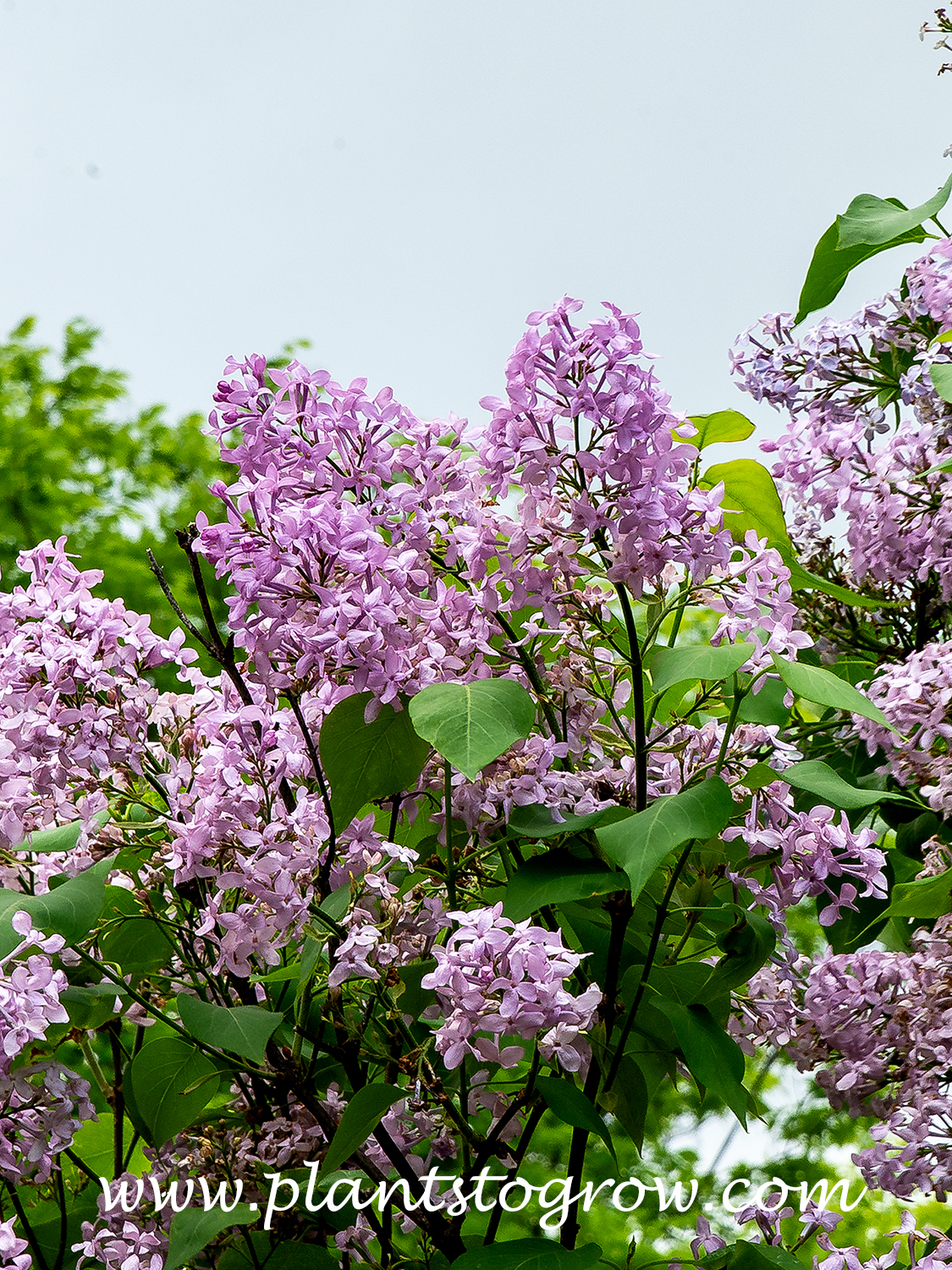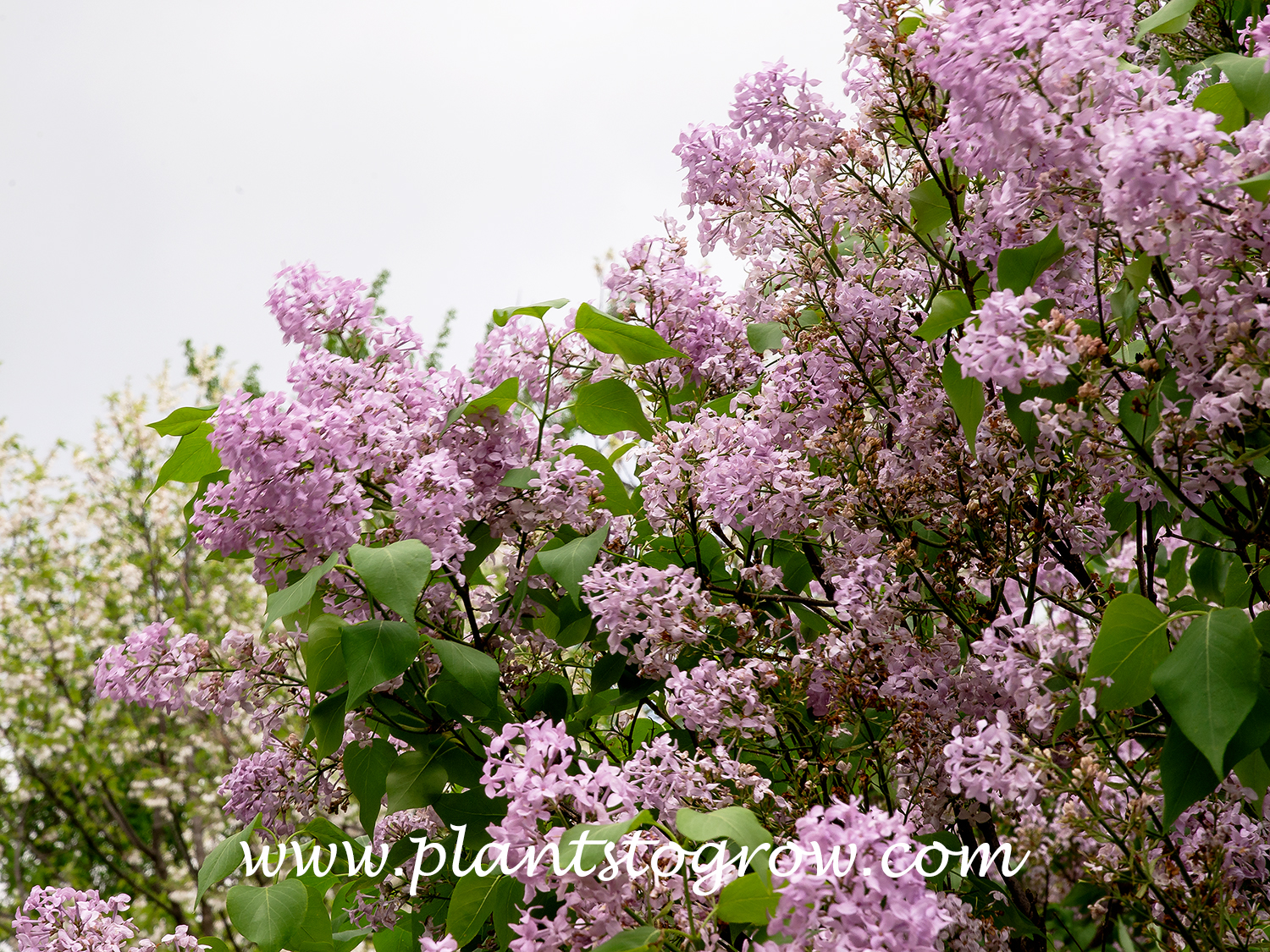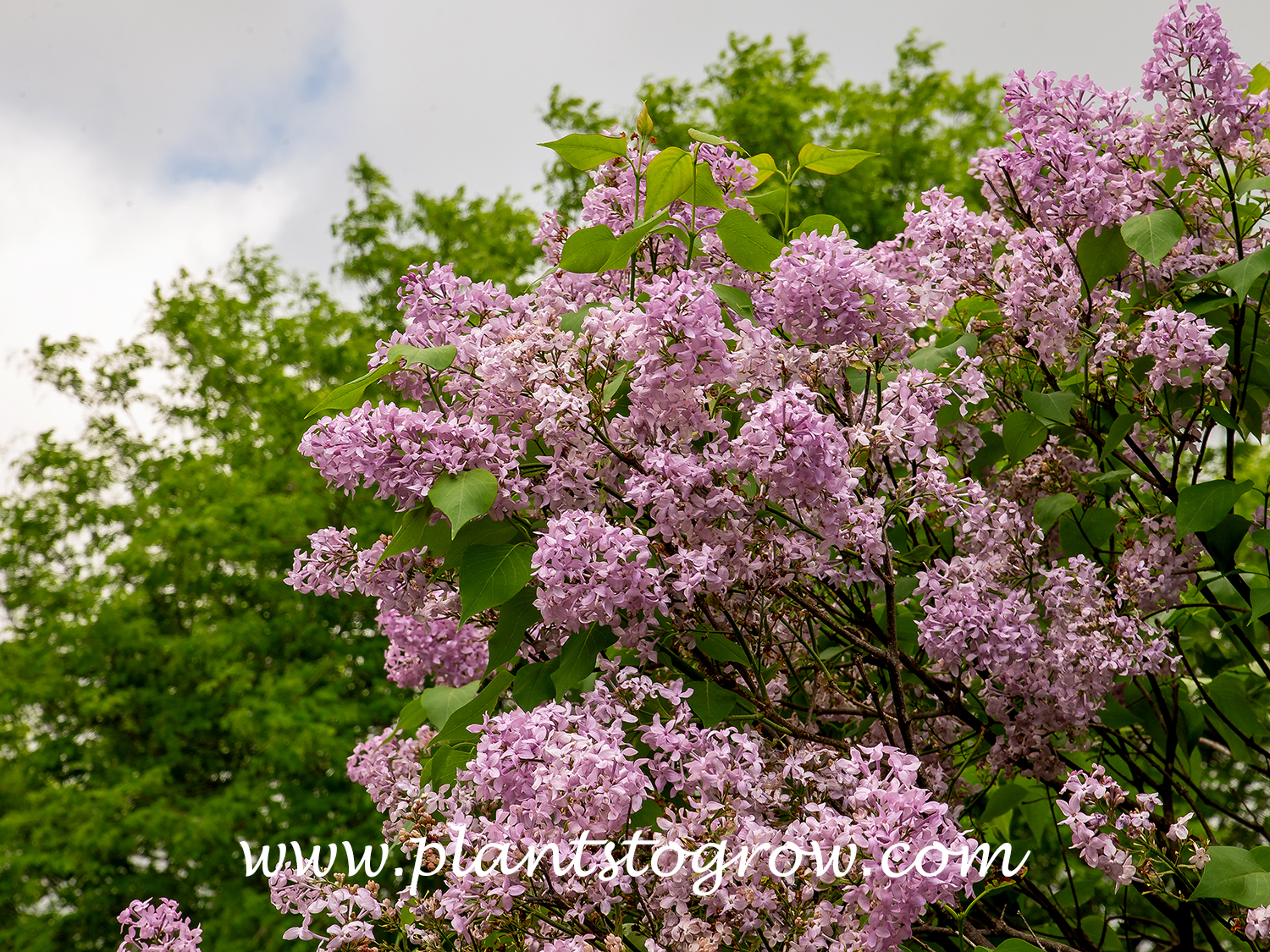| Description | Excel Lilac (Syringa x hyacinthia) is a deciduous shrub with a single pink to lavender flowers in the spring. |
|---|---|
| Pronunciation | (si-RING-gah) |
| Plant Type | Shrubs Deciduous |
| Hardiness Zone | (3)4-9 |
| Sunlight | For best flowering, full sun is needed. |
| Moisture | average |
| Soil & Site | average |
| Flowers | Showy panicles of fragrant lilac lavender flowers blooming in mid-spring. |
| Fruit | Beaked dehiscent capsule with brownish seeds. |
| Leaves | Simple, green leaves, heart-shaped, little if any fall color may suffer from powdery mildew in the fall, best planted where it has good air circulation, |
| Dimensions | 8-10 feet tall |
| Maintenance | Since lilacs bloom on the next season's wood, prune them after they have finished blooming. There are several ways to prune a lilac. The most drastic method is to cut them down to the ground. I have seen some regrow from suckering, while others did not survive this method. You can remove the old stems and let the new suckers fill in, thinning them to your desired amount. For many older plants, we have removed all the suckers and left a few of the old stalks, pruning them down to bare base stems and transforming the plant into a small tree. This severe pruning will delay flowering for a few years. |
| Propagation | division of suckers, softwood cuttings, will not true from seeds |
| Cultivar Origin | Developed by Canadian breeder Frank Skinner (1882-1967) in 1931. |
| Notes & Reference | #104-Lilacs “A Gardeners Encyclopedia (Fiala) |

Cart



